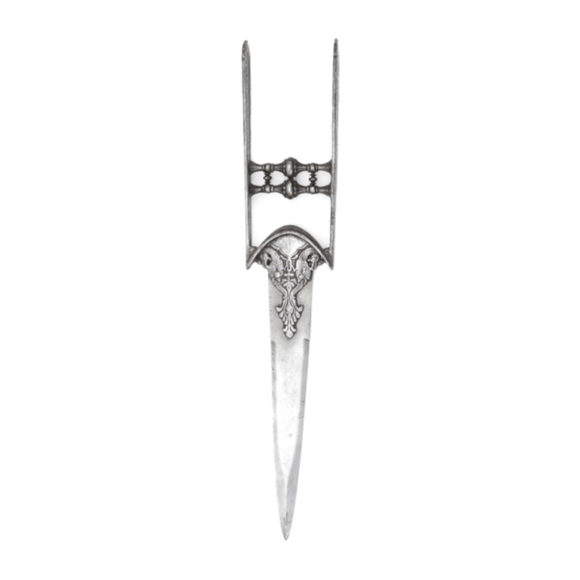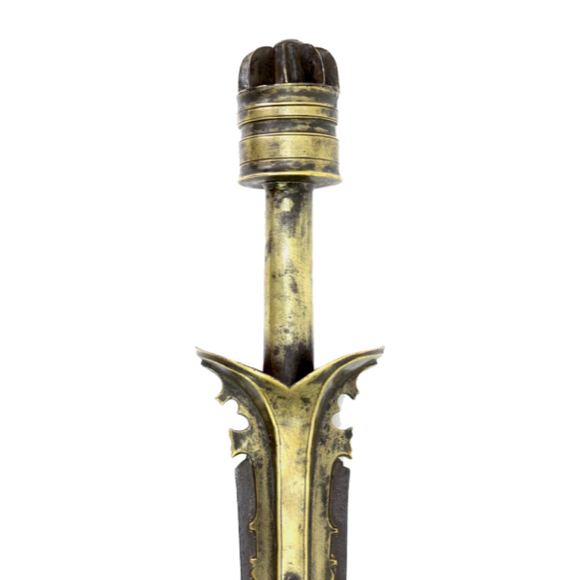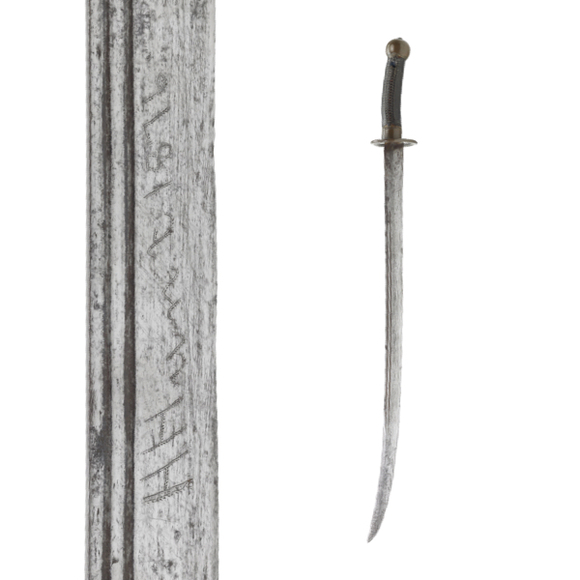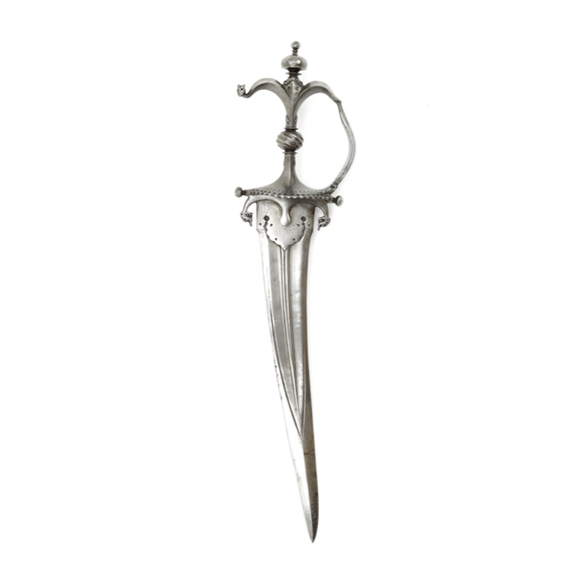Language: Malayam
Source: In common use
Description
The Nayar, or Nair, are a group of South Indian castes that were historically seen as a noble warrior caste of the Tamil people.
One of the earliest accounts of the Nayar is in the Codice Casanatense, held in the Casanata Library, Rome. It is thought to date from the 1540s. The text accompanying the illustration translates:
"Malabarese gentiles (Hindus) that are called Nayars"

Nayar people in the Codice Casanatense of circa 1540.

A South Indian sword, also known as churika in Malayam.
Much like the one in the illustration above.
Sold by Mandarin Mansion in 2020.
Nayar temple swords
The Nayar are mostly known for their peculiar recurved swords, often referred to as "Nayar temple sword" because they are still found and used ceremonially in Nair temples up until this day. As a warrior caste of the Tamil people, the swords used are based on actual military swords used in earlier times.
An old Nayar fighting sword. 16th-17th century.
Sold by Mandarin Mansion in 2019.

A very fine Nayar ritual sword. 17th-18th century.
Sold by Mandarin Mansion in 2019.

An antique bronze sword in use at a contemporary Theyyam ritual.
Photo by Dhruvaraj S.
Their strong association with the Nayar was probably because they were the last to still use them. But swords with a recurved blade appear in India quite early, probably modeled after the kopis sword carried by Alexander the Great and his armies. They remained in use for well well over one and a half thousand years, being one of the primary sword types used until at least the Vijayanagara empire that lasted from 1336-1646.

Iron machaira or kopis sword
5th–4th century B.C.
Metropolitan Museum accession number 2001.346
Vijayanagara defeat at the hands of the allied Deccan sultanates, primarily after the Battle of Talikota of 1565, gradually started the replacement of traditional south Indian recurved swords to northern style, curved talwar swords.
Nayar straightswords
The Nayar also used straightswords, called kayamkulam vaal which were primarily associated with royalty. Kayamkulam refers to the medieval Kingdom established in the 11th century and incorporated into Travancore in 1746, after which it became a princely state. Vaal is the local word for double edged sword. It were the armies of Travancore, mostly consisting of Nair, that defeated the Dutch at the Battle of Colachel in 1741, successfully ending Dutch authority over the Malabar coast.

Kayamkulam vaal, 18th century.
Sold by Mandarin Mansion in 2018.
Very few examples survived or have been published. The most famous is probably the sword of Velu Thampi (1765–1809) who was prime minister of Travancore between 1802 and 1809 and who rebelled against the British East India Company. Another is in The National Museum, Edinburgh, Scotland. It is illustrated on the back of the dust jacket of Hindu Arms & Ritual by Robert Elgood. Another example is still held in the old Kayamkulam royal Palace in Krishnapuram.1
Finally, a similar sword it seen in the hands of Anizham Thirunal Marthanda Varma who ruled Kingdom of Travancore from 1729-1758.
Notes
1. See a photograph of the sword on Wikimedia Commons






